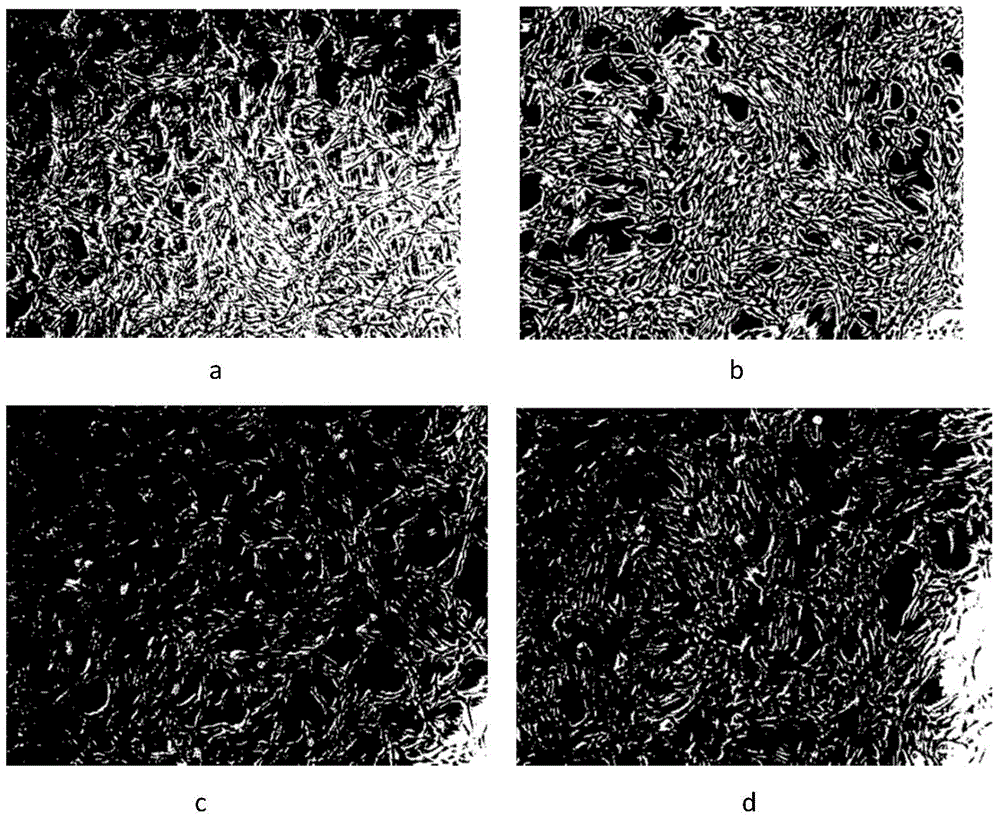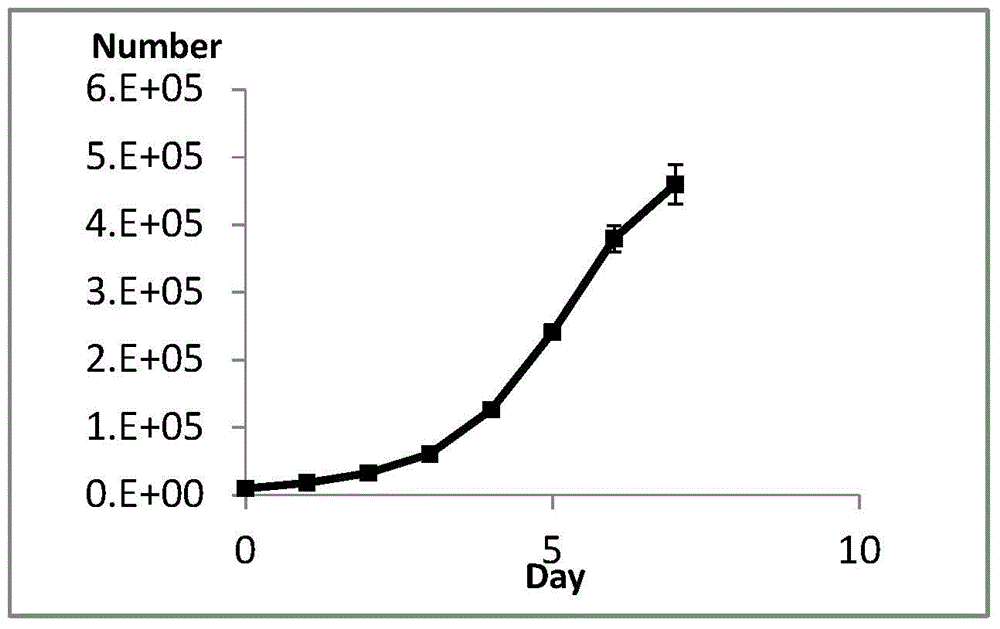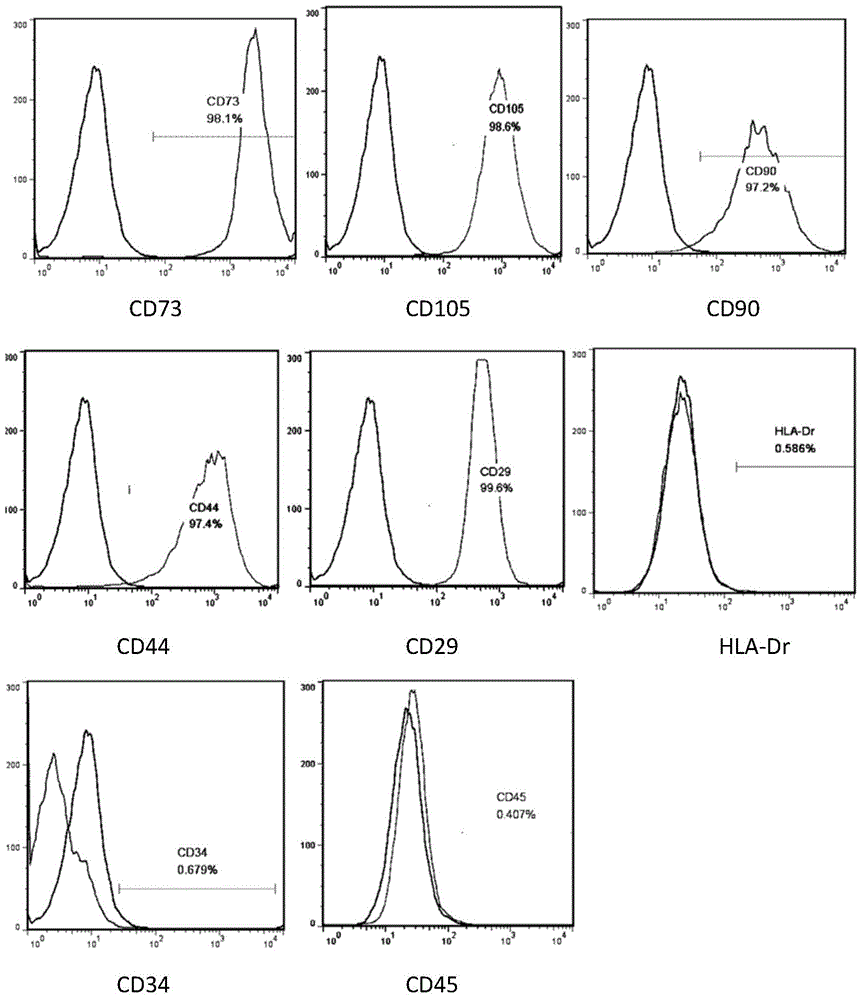Umbilical cord tissue mesenchymal stem cell isolated culture method
A technology of umbilical cord tissue and stem cells, which is applied in the field of stem cells and bioengineering, and can solve problems such as cell damage
- Summary
- Abstract
- Description
- Claims
- Application Information
AI Technical Summary
Problems solved by technology
Method used
Image
Examples
Embodiment 1
[0033] Sample Collection and Cell Isolation and Culture (The reagent consumables used in the experiment are all sterile)
[0034] 1. Collect the umbilical cord tissue of the postpartum full-term fetus under strict aseptic conditions, put it into a sterile glass bottle containing MSC medium supplemented with 100U / ml penicillin and 100μg / ml streptomycin, and transport it at 4°C. Make sure the umbilical cord tissue is completely submerged below the surface of the medium solution and process the umbilical cord tissue within 48 hours.
[0035] 2. Put the fetal umbilical cord tissue into a 15cm petri dish in an ultra-clean workbench, and use forceps to squeeze out the blood in the umbilical cord. The umbilical cord tissue was then washed with PBS until the blood on the surface of the umbilical cord was cleaned.
[0036] 3. Use scissors to cut the umbilical cord tissue into 3-5cm length, use forceps to tear the amniotic membrane on the surface of the umbilical cord, and remove the...
Embodiment 2
[0064] Sample collection and cell isolation and culture (the reagent consumables used in the experiment are all sterile)
[0065] 1. Collect the umbilical cord tissue of the postpartum full-term fetus under strict aseptic conditions, put it into a sterile glass bottle containing MSC medium supplemented with 100U / ml penicillin and 100μg / ml streptomycin, and transport it at 4°C. Make sure the umbilical cord tissue is completely submerged below the surface of the medium solution and process the umbilical cord tissue within 48 hours.
[0066] 2. Put the fetal umbilical cord tissue into a 15cm petri dish in an ultra-clean workbench, and use forceps to squeeze out the blood in the umbilical cord. The umbilical cord tissue was then washed with PBS until the blood on the surface of the umbilical cord was cleaned.
[0067] 3. Use scissors to cut the umbilical cord tissue into 3-5cm length, use forceps to tear the amniotic membrane on the surface of the umbilical cord, and remove the a...
Embodiment 3
[0075]Sample collection and cell isolation and culture (the reagent consumables used in the experiment are all sterile)
[0076] 1. Collect the umbilical cord tissue of the postpartum full-term fetus under strict aseptic conditions, put it into a sterile glass bottle containing MSC medium supplemented with 100U / ml penicillin and 100μg / ml streptomycin, and transport it at 4°C. Make sure the umbilical cord tissue is completely submerged below the surface of the medium solution and process the umbilical cord tissue within 48 hours.
[0077] 2. Put the fetal umbilical cord tissue into a 15cm petri dish in an ultra-clean workbench, and use forceps to squeeze out the blood in the umbilical cord. The umbilical cord tissue was then washed with PBS until the blood on the surface of the umbilical cord was cleaned.
[0078] 3. Use scissors to cut the umbilical cord tissue into 3-5cm length, use forceps to tear the amniotic membrane on the surface of the umbilical cord, and remove the ar...
PUM
 Login to View More
Login to View More Abstract
Description
Claims
Application Information
 Login to View More
Login to View More - R&D
- Intellectual Property
- Life Sciences
- Materials
- Tech Scout
- Unparalleled Data Quality
- Higher Quality Content
- 60% Fewer Hallucinations
Browse by: Latest US Patents, China's latest patents, Technical Efficacy Thesaurus, Application Domain, Technology Topic, Popular Technical Reports.
© 2025 PatSnap. All rights reserved.Legal|Privacy policy|Modern Slavery Act Transparency Statement|Sitemap|About US| Contact US: help@patsnap.com



